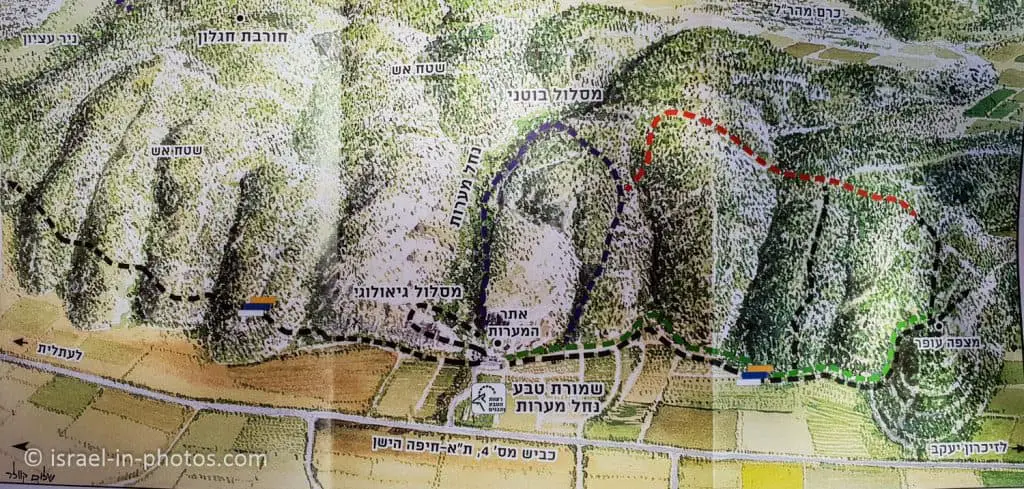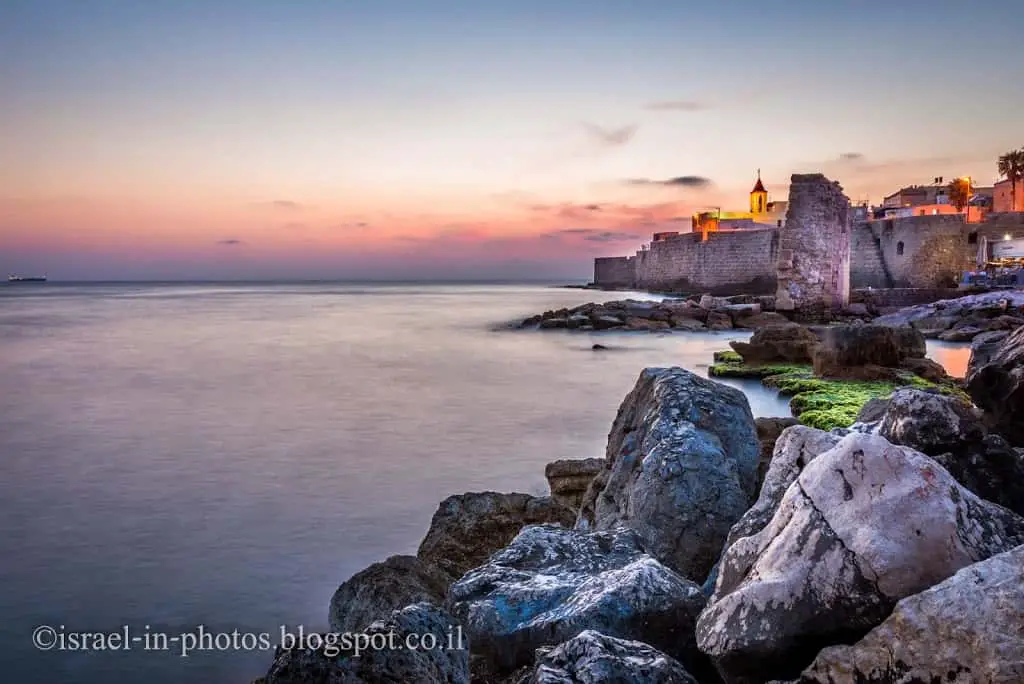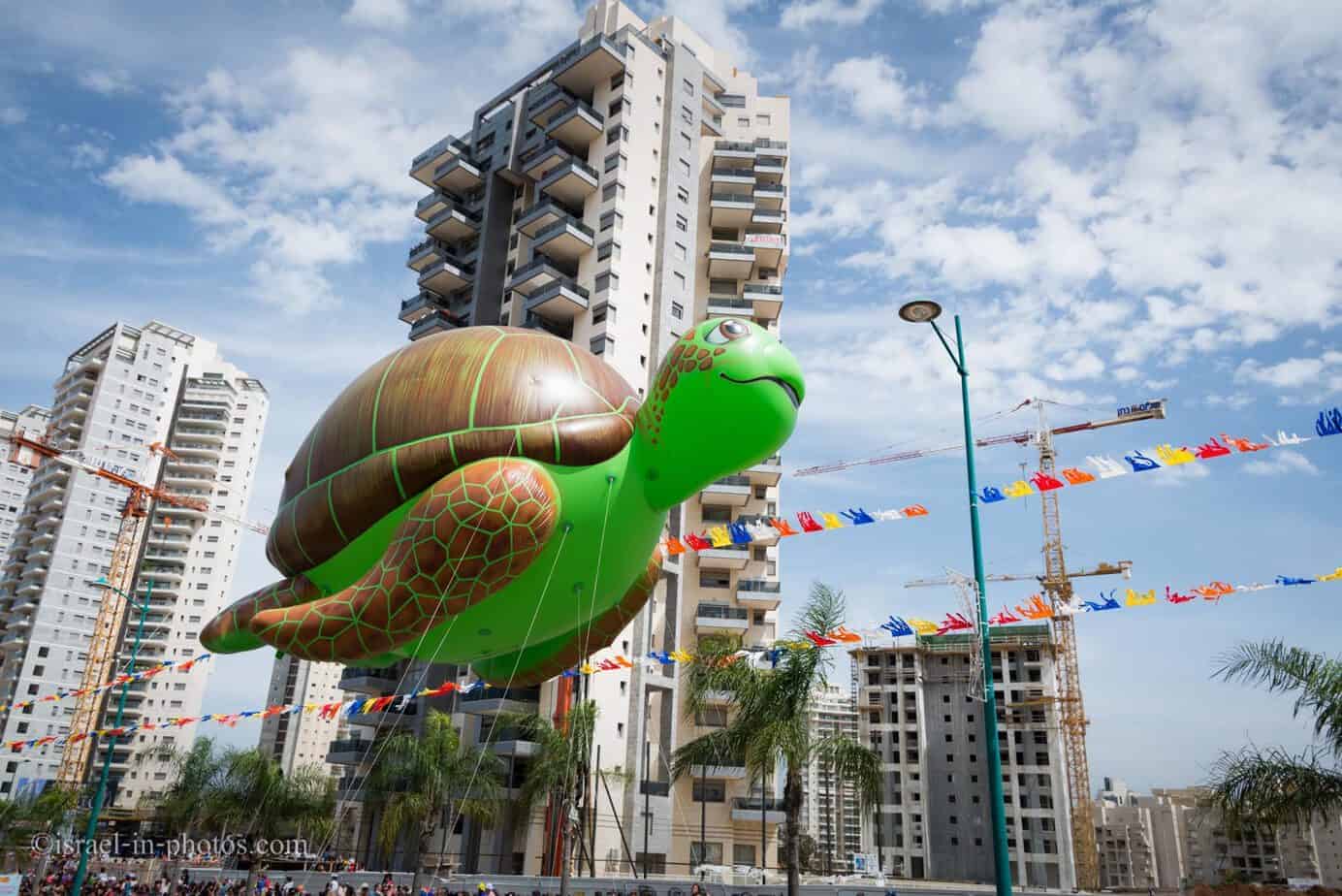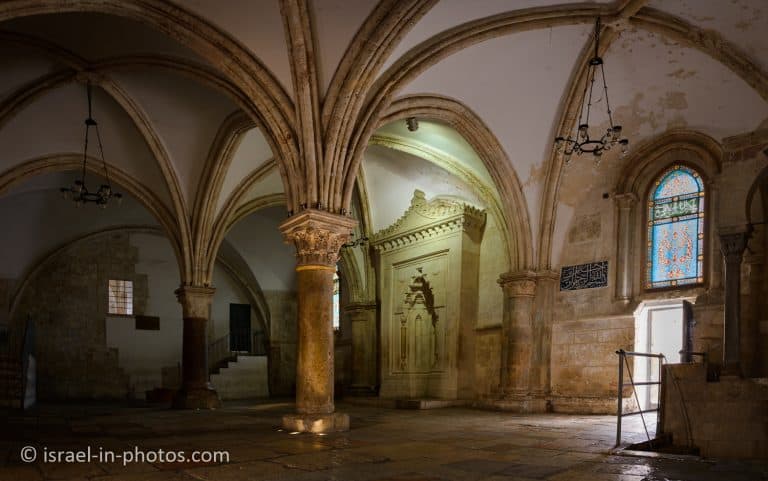Nahal Mearot Nature Reserve – Visitors Guide (with Tracks)
Nahal Mearot Nature Reserve is a world heritage site. It is home to a group of prehistoric caves where humans lived for 500,000 years.
Table of Contents
Map
Nahal Mearot Nature Reserve is located at Hof Hacarmel, not far from Haifa.
Directions for drivers: Link to Waze and Link to Google Maps
Directions for public transport: Link to Moovit
Interactive map of the area:
And here is a photo of the map from the official brochure:
Note: you can click on the map above and then enlarge it.
Tracks
Many tracks, including the Israeli National trail, pass through this nature reserve. And as you enter, you will see a sign pointing to the most common tracks.
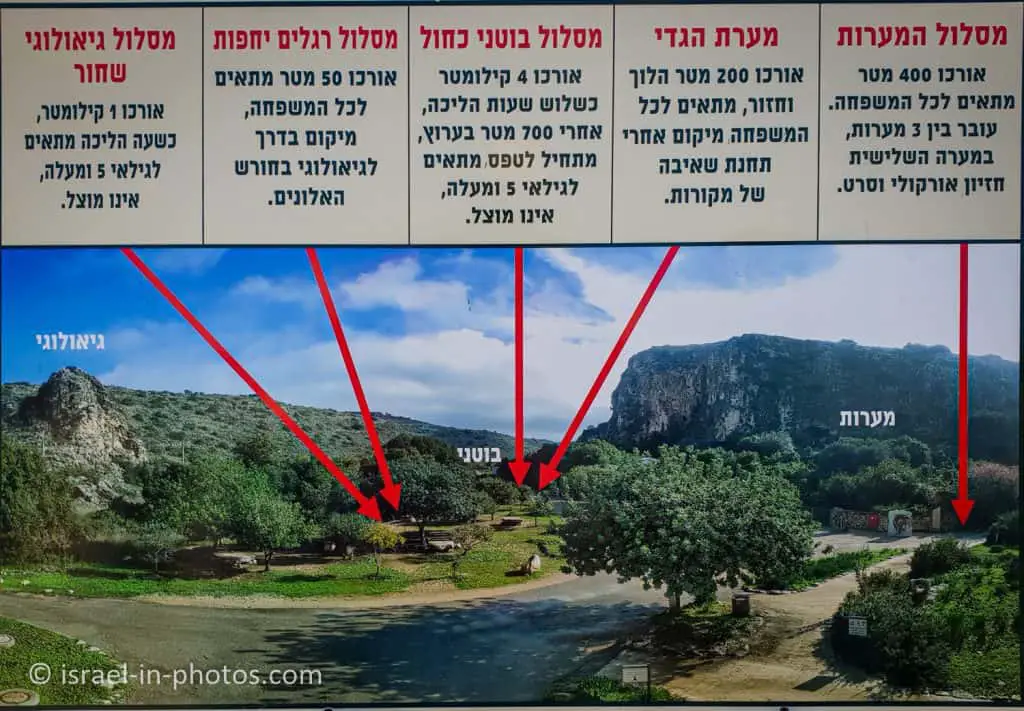
And here is an interactive map from israelhiking.osm.org.il where these trails are marked:
And here are the details of these tracks:
| Name | Color of the Trail on the Map above | Description | Distance (km) | Total climb and descent (meters) | Notes |
|---|---|---|---|---|---|
| The caves trail | Green | This trail takes you to the prehistoric man caves. | 0.4 | 50 | After completing it, you can take the blue trail and reach the Gdi cave within ten minutes. |
| The Botanical track | Blue | You start with the blue trail and return using the Israeli National Trail. | 3.6 | 292 | Suitable for older kids. And there is almost no shade along the trail. |
| Geological path | Black | Loop trail using the black markings. | 0.8 | 116 | Suitable for older kids. And there is almost no shade along the trail. |
If you are visiting with younger children, you should also know the barefoot trail. It is located near the entrance, and its length is 50 meters. As you enter, you will see the following sign:

Opening Hours
Sunday – Thursday and Saturday: 8:00 – 17:00 (16:00 in winter).
Friday: 8:00 – 16:00 (15:00 in winter).
On holiday eves, usually 8:00 – 13:00.
Note: Since the pandemic, the Israel Nature and Parks Authority has started limiting the number of people in each park. Thus, reservations are recommended through the official site (you can find the link below).
Entrance Fee
Adult 24 NIS, child 10 NIS, and student 20 NIS. Free for National Parks annual subscribers.
If you visit multiple National Parks, consider purchasing a combo ticket. Additional information is available at National Parks and Nature Reserves.
Adults 22 NIS, children 9 NIS, and Students 19 NIS. And free for National Parks annual subscribers.
Note: opening hours and ticket prices were updated in December 2022. In any case, recheck the official site before visiting.
Contact Information
Phone: 04-9841750/2
World Heritage Site
As I mentioned, Nahal Mearot Nature Reserve is a world heritage site.
The prehistoric site in the Nahal Mearot Nature Reserve was inscribed by UNESCO in 2012 as a World Heritage Site with outstanding universal value for the study of human evolution.
It is home to a group of prehistoric caves in which humans lived for some 500,000 years. Such long-term habitation of the same caves is very rare anywhere in the world.
Note: unless stated otherwise, all quotes were taken from the official site.
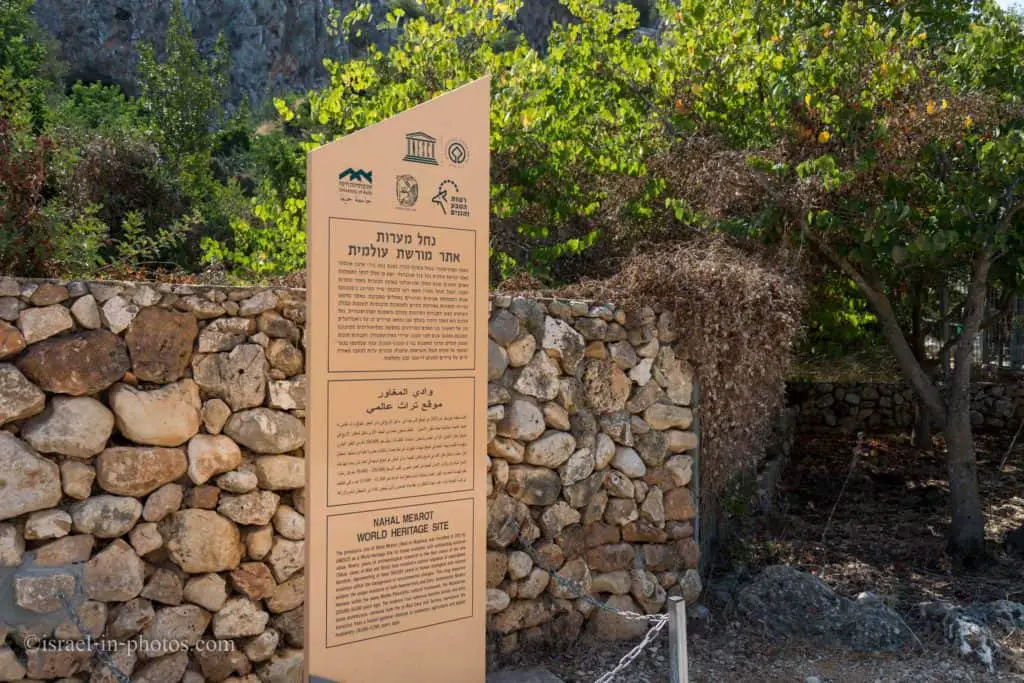
The Caves Track – Prehistoric Man Trail
Since our latest visit was in summer and was pretty hot, we decided not to take a long trail and chose the cave track. It is a short and loop track that visits the prehistoric man caves.
There are three caves along this track. To reach the first two, you need to take the stairs. The third cave is the biggest one, with a wheelchair trail leading to it. Also, inside the biggest cave, there is a fifteen-minute movie about the life of prehistoric people.
You turn to the right and follow the paved path as you enter.
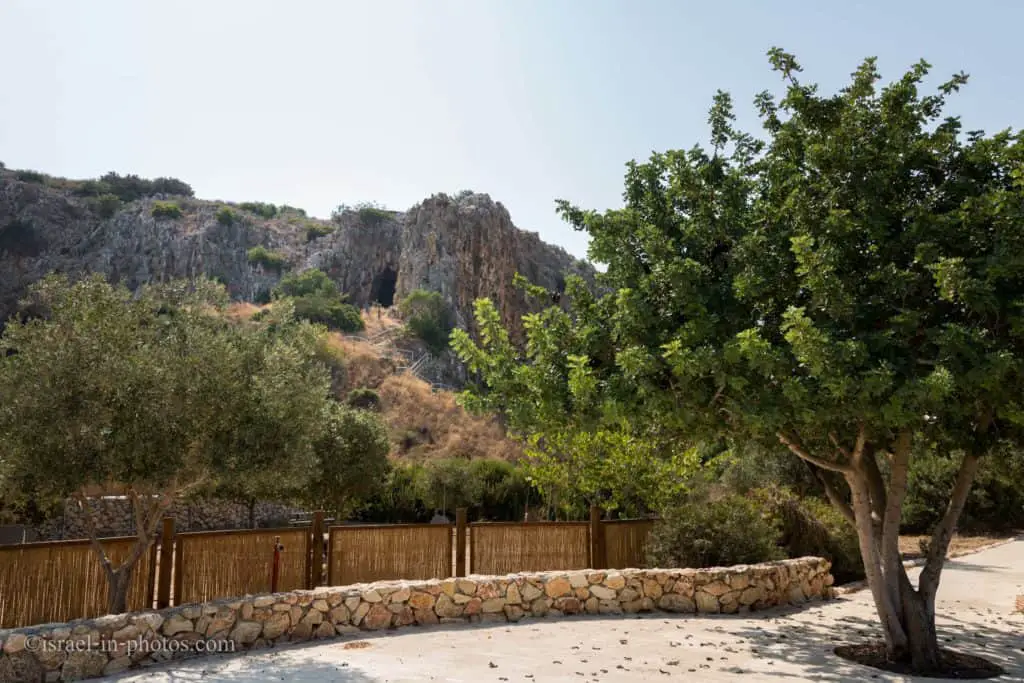
At the paved path, we took the stairs and started the climb.
And on our way saw this sign explaining about sea level.

This is a dry land spot today, but it was covered by water until 1-2 million years ago. The cliff in the photo is a fossil reef formed 100 million years ago from skeletons of marine organisms. The caves were created through limestone dissolution. The uplift of the Carmel caused the caves to become exposed.
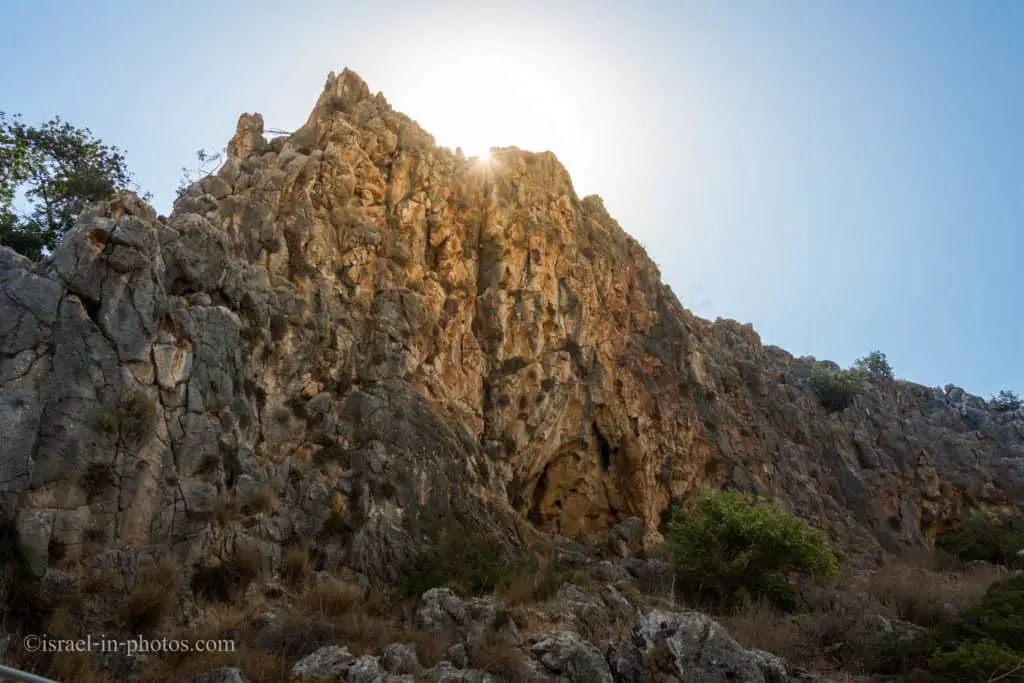
View from the stairs:

You can find restrooms and the ticket office at the round buildings. The ticket office also serves as a store with snacks and souvenirs.
The Oven Cave
This cave is named for the opening in its ceiling.
The first excavations in this cave were conducted in 1927, headed by Dorothy Garrod. A team from Haifa University is currently excavating the cave, and they have reached a depth of about 20 meters.
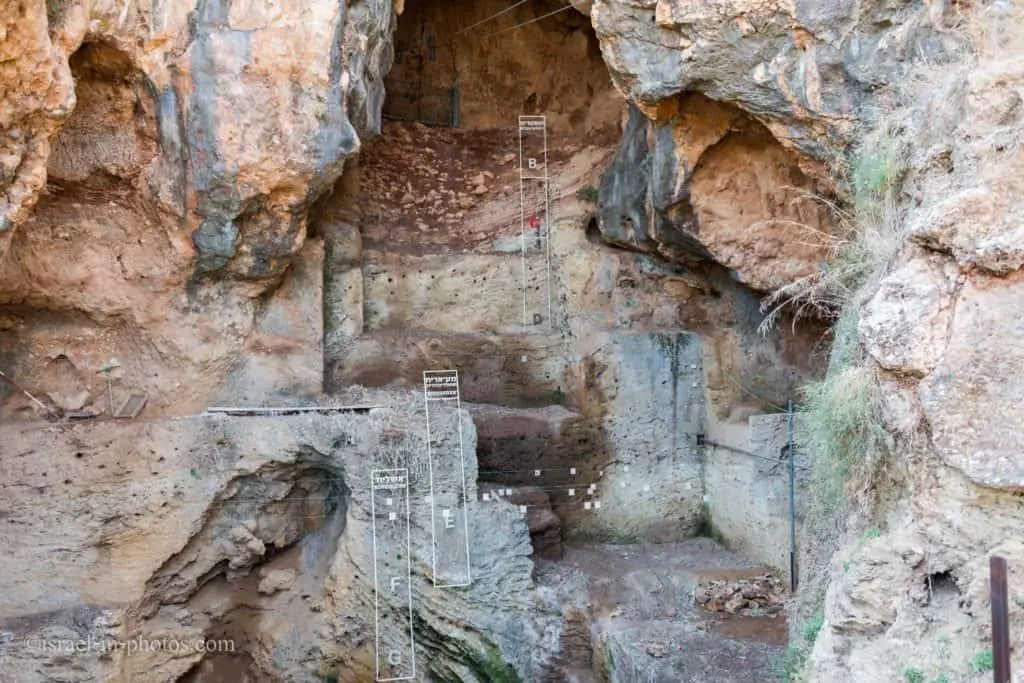
Archeological excavations in this cave exposed a sequence that is one of the oldest and longest known – beginning some one million years ago and continuing to about 40,000 years ago. During this period, the cave was occupied by people of three different prehistoric cultures. Each of these cultures is defined by appropriate stone tools, and it is possible to follow improvements in technology through the sequence.
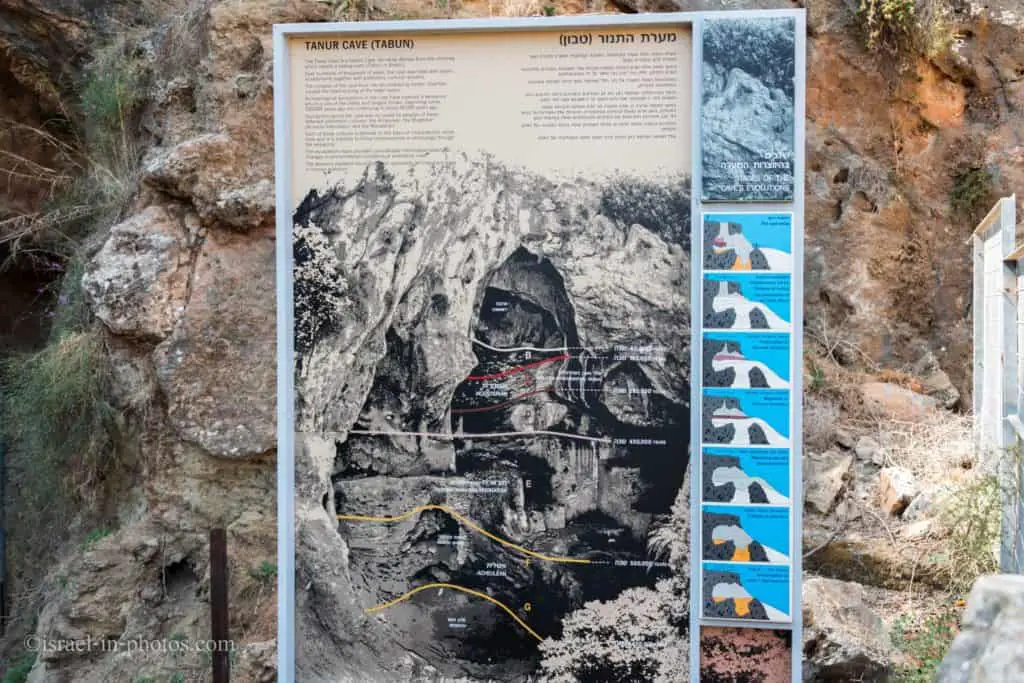
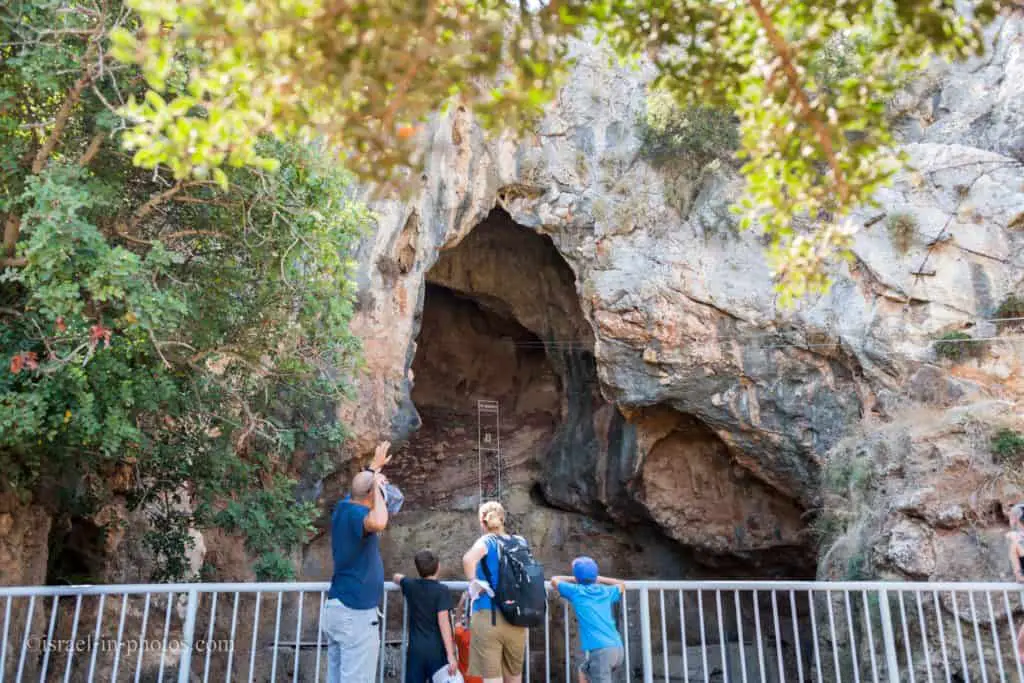
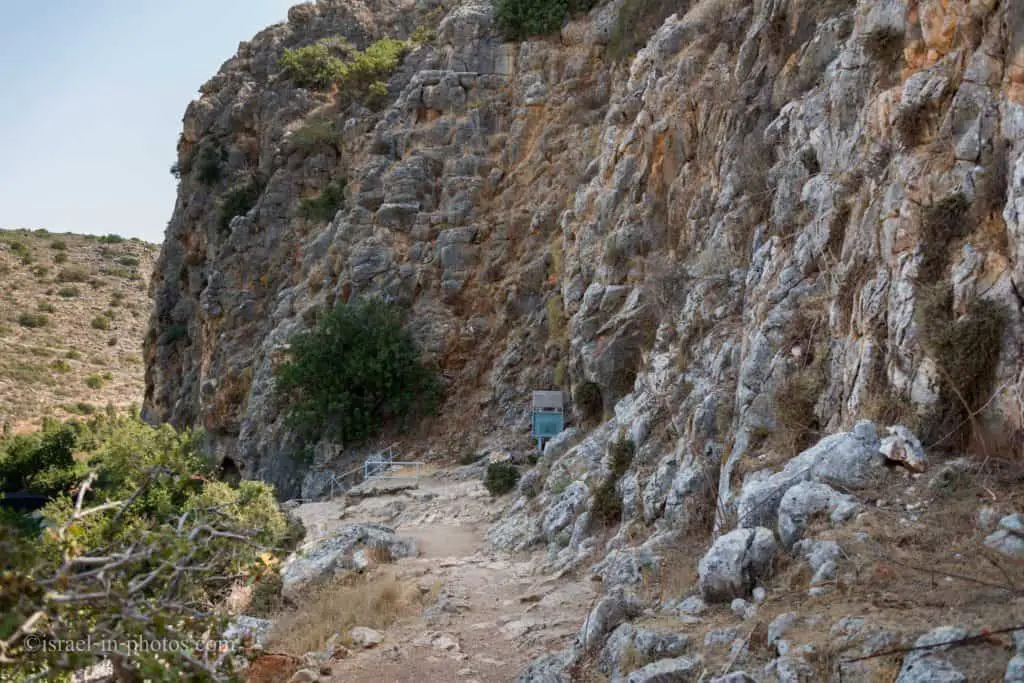
After a short walk, we reached the second cave.
Camel Cave
Camel cave is named after its hump shape. In the cave, you can see how ancient people lived.
The activity in this cave may have included the processing of raw materials. The cave contains displays showing human life styles in the various prehistoric periods.

People from The Mousterian culture lived in this cave (100,000 – 40,000 years ago). They were hunter-gatherers, and the photo above shows what their lives probably looked like.
The Stream Cave
The next cave along the route is the biggest one on site.
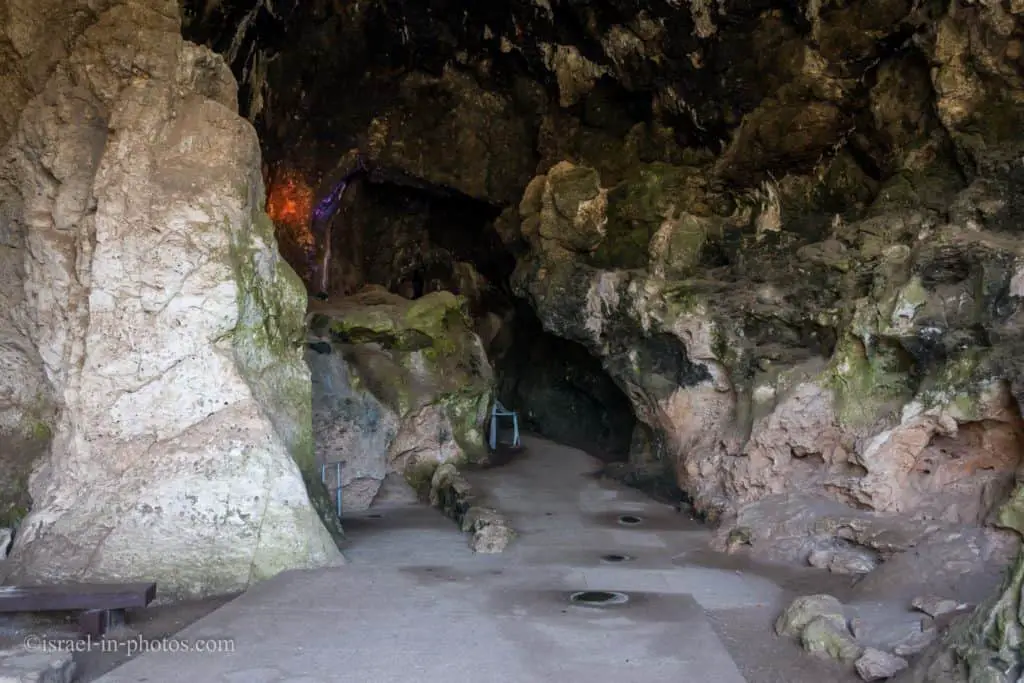
The Stream Cave, consists of an extensive entrance hall, at the end of which there is a 70-meter long corridor. In front of the cave there is a broad rocky platform. The main findings in this cave are those of the Aurignacian culture (40,000 to 20,000 years ago). The cave was abandoned a few thousand years ago, and when humans returned there, they lived mainly in the entrance hall and on the rock platform in front of the cave (Natufian culture, 12,000-10,000 years before our time).

After about ten meters from the entrance, you will see something similar to a tablet on a stand. If a movie is not playing, you can choose the language and start screening. As the audiovisual presentation starts, special lights will go on. And you continue walking further inside the cave to the benches where you can see the movie.

The wheelchair-accessible trail I mentioned at the beginning of this post leads towards and inside this cave.
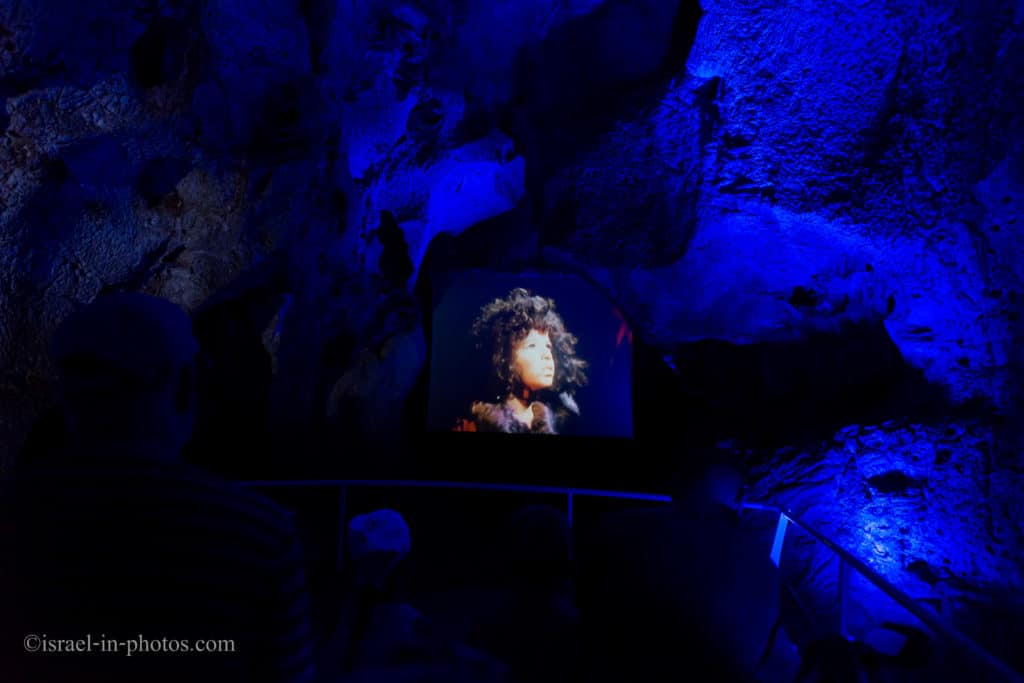
The movie is not graphical, but there is a scene where a wild animal attacks a human, and in the next shot, prehistoric people are burying their friend. That can be frightening to small kids.
The duration of the audiovisual show is fifteen minutes.


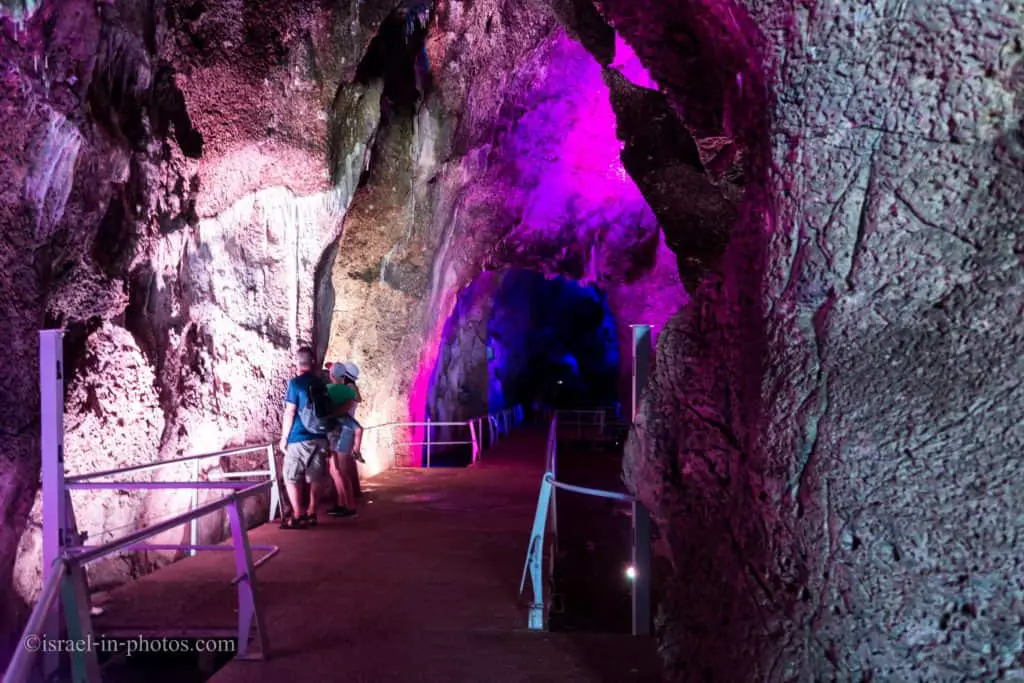
At the entrance to the Stream Cave, you can find this sign. If you look closely at the walls, then you will be able to recognize conical shells.

Near this cave’s entrance is a reconstruction of a Natufian burial site.

The Prehistoric man track ends after visiting the three caves. At this point, it leads back to the entrance.

Fauna
Since the movie mentions a battle with something that looks like a wild lion, I wanted to mention what animals can be found in this area.
Past
Excavations conducted in the caves exposed the bones of animals that were hunted in prehistoric times, through which it is possible to reconstruct which animals lived on the Carmel tens of thousands of years ago. According to the findings, 120,000 years ago hippopotamus (Hippopotamus amphibious) lived on the Carmel Coast (and survived up to the Iron Age) and Nile crocodiles (Crocodylus niloticus) (which survived until the 20th century). There were also warthogs (Phacochoerus africanus), common eland (Taurotragus oryx), leopards (Panthera pardus), hyenas, mongoose (Herpestes), Egyptian jackals (Canis aureus lupaster), mountain gazelle (Gazella gazella), rats, mice, and rock hyrax. These animals are all African type fauna. In the course of the Mousterian period (60,000 – 50,000 years ago), many species became extinct, probably due to environmental changes. Out of the many animals that lived on the Carmel and on the coast we can mention the wild horse (Equus ferus, the onager (Equus hemionus) and the Mediterranean zebra, the wild goat (Capra aegagrus), the brown bear (Ursus arctos) , the fox (Vulpes vulpes) and the wolf (Canis rufus).
Present
Going from west to east along the riverbed one can see a phenomenon in which species of animals from a dry, southern desert background live in one area of the reserve, with animals and plants from humid northern regions living in another area. The range of habitats and the relative isolation of the reserve provide a home for a broad variety of creatures. Wild boar (Sus scrofa) and jackals (Canis aureus) hide in the thickets on the slopes, and foxes (Vulpes vulpes) and porcupines (Hystricidae) dig their dens in between the soft marly rocks. You will also find here the common badger (Meles meles), the rock hyrax (Procavia capensis) and the Cairo spiny mouse (Acomys cahirinus). Among the birds, there is the Eurasian eagle-owl (Bubo bubo), Eurasian sparrowhawk (Accipiter nisus) and long-legged buzzard (Buteo rufinus). Also, Nature and Parks Authority has taken action to restore the lanner falcon (Falco biarmicus) to the reserve.
Flora
The reserve is typified by Mediterranean woodland, with a natural forest of Jerusalem Pine (Pinus halepensis) along the ridge. The vegetation on the banks of the stream is divided – on the southern bank grows rich Mediterranean vegetation, while the vegetation on the northern bank is poor in woody plants and rich in grasses. On the high cliffs grows a range of cliff plants, among others “Cretan Cabbage” (Brassica cretica), which grows in Israel only along Nahal Me’arot.
The vegetation growing in the Nahal Me’arot nature reserve is typical of the low hilly Mediterranean area. Within the boundaries of the reserve, the slope facing south is low in woody vegetation and rich in grassy plants, while the slope facing north is rich in thick Mediterranean woodland trees. This phenomenon is unique here because the distance between the two hills is only a few dozen meters.
The southern slope is more exposed to sunshine and therefore is typified by vegetation more resistant to dryness. Here the common carob tree (Ceratonia siliqua) is dominant and is accompanied by the mastic bush (Pistacia lentiscus). The northern slope is dominated by the common oak (Quercus) and Broad-Leaved Phillyrea (Phillyrea latifolia), up which climb the Etruscan honeysuckle (Lonicera etrusca) and the Tamus vine.

We followed the “Prehistoric Man” track almost to the entrance, but we made a slight detour at this point. As I mentioned, we did not want to make the longer trails since it was a hot day. Therefore at the entrance, I asked the guide whether we could see something more nearby. She pointed out there is another new excavation site close by. We followed the blue track along the dried stream into the mountains.

Gdi Cave
After about a seven-minute walk, we saw an archeological site on Carmel mountain’s slope to the right.
In front of the Gdi cave, we saw an active archeological site. That is a Mousterian cemetery. It contained the skeletons of ten individuals (men, women, and children).
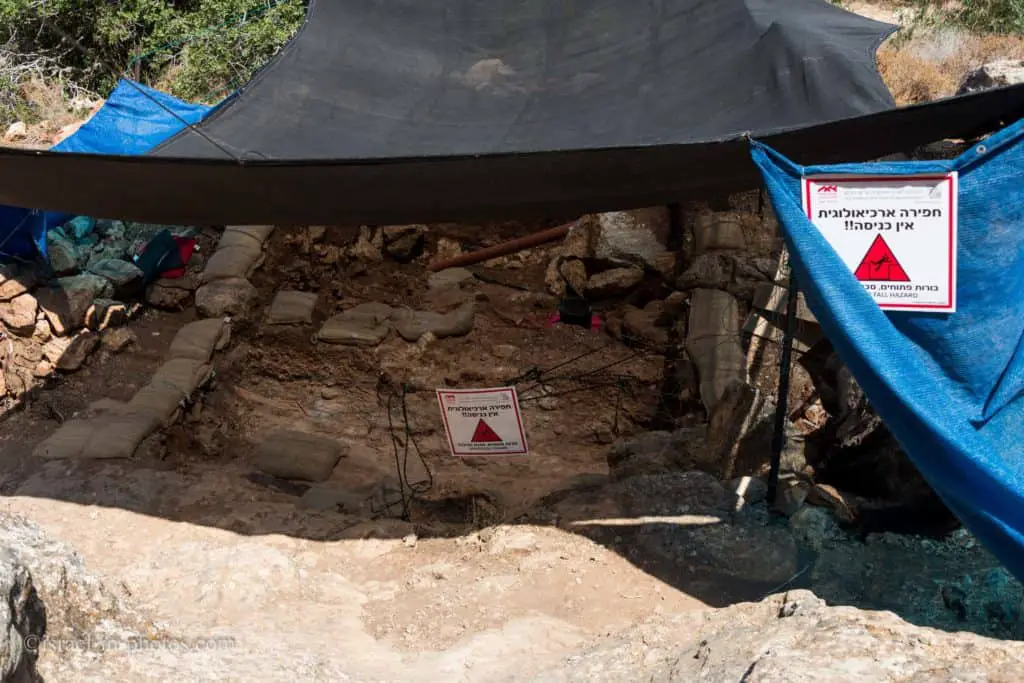
The skeletons belong to the early Homo sapiens type, who lived 90,000 years ago in this area.
And this is the Gdi Cave:
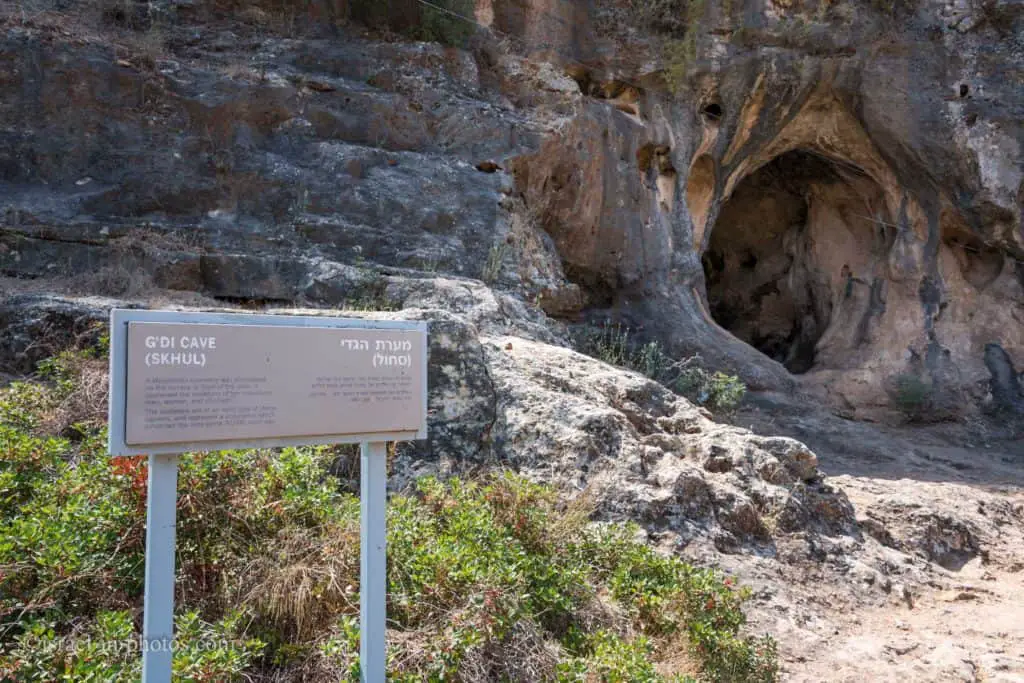
We headed back towards the exit from Nahal Mearot Nature Reserve from the fourth and the last cave.
The visit took us about two hours, which is more than enough in hot weather.
Prehistoric Museum
If you want to know more, see the Prehistoric Museum in Haifa Educational Zoo.
Summary
Nahal Mearot Nature Reserve presents important archeological findings. But if you are visiting with kids or not an archeology lover, I would suggest visiting this Nature Reserve when additional activities occur (and there are such from time to time). A guide will make the visit much more enjoyable.
Think again if you believe the caves will protect you from the sun. As you saw, most of the time, we were outside. Thus, do not visit during the hot hours and wear sunscreen. The additional bonus of an early visit is making one of the tracks in the area or touring nearby attractions (see the interactive map at the top).
Have you ever visited Nahal Mearot Nature Reserve? How was your experience? Tell us in the comments below.
That’s all for today, and I’ll see you in future travels!
Stay Tuned!
Additional Resources
Here are several resources that I created to help travelers:- Trip Planner with Attractions and Itineraries is the page that will help you create your perfect travel route.
- What is the Best Time to visit Israel? To answer this question, we will consider the weather, prices, holidays, festivals, and more.
- Information and Tips for Tourists to Israel will answer the most common questions tourists have about Israel (including safety, passports, weather, currency, tipping, electricity, and much more).
- Israel National Parks and Nature Reserves include a complete list, top ten, map, tickets (Israel Pass, Matmon, combo), and campsites.
- If you are looking for things to do, here are the pages for Jerusalem, Tel Aviv, Haifa, Sea Of Galilee, Akko (Acre), Eilat, Nazareth, Safed (Tzfat), and Makhtesh Ramon.


